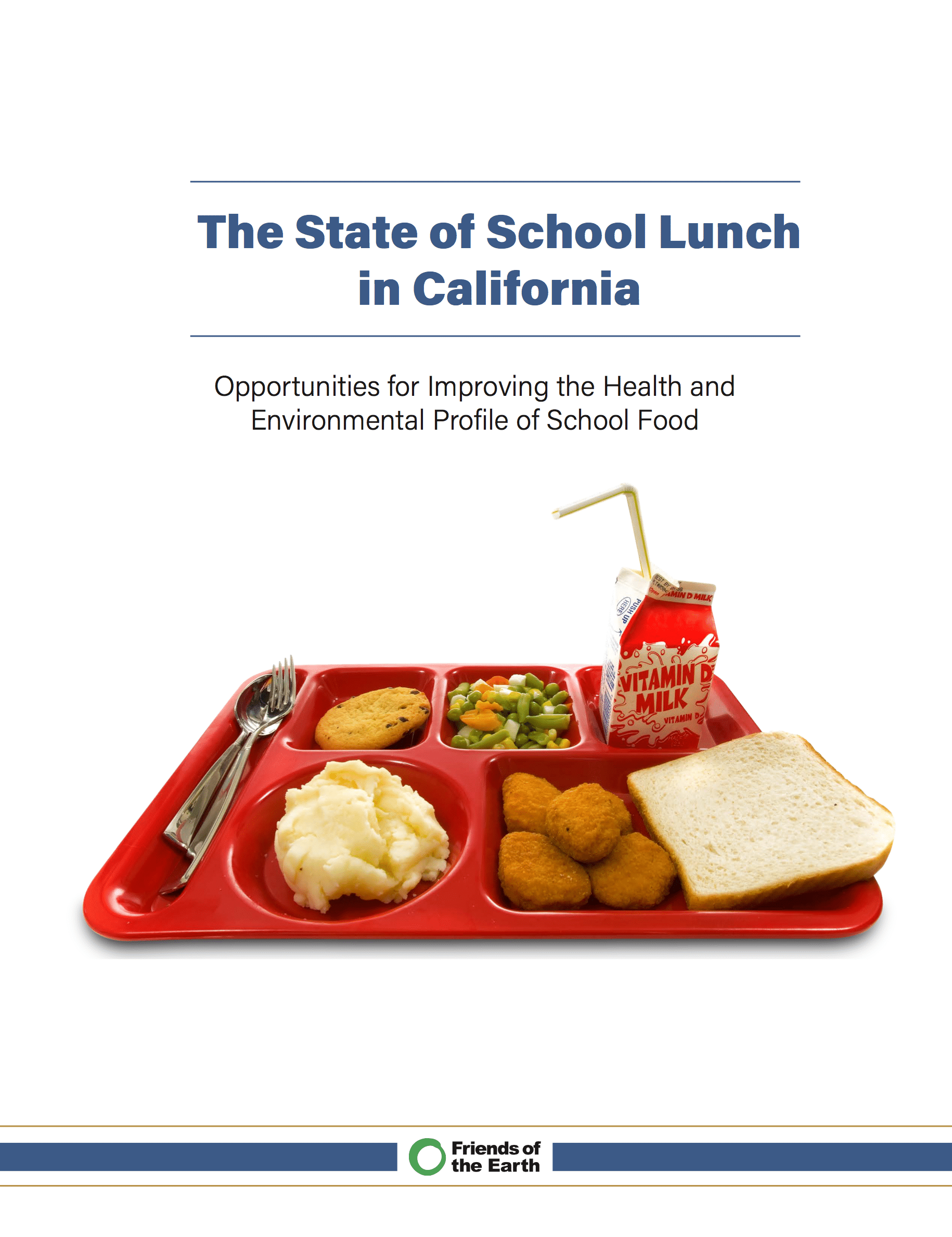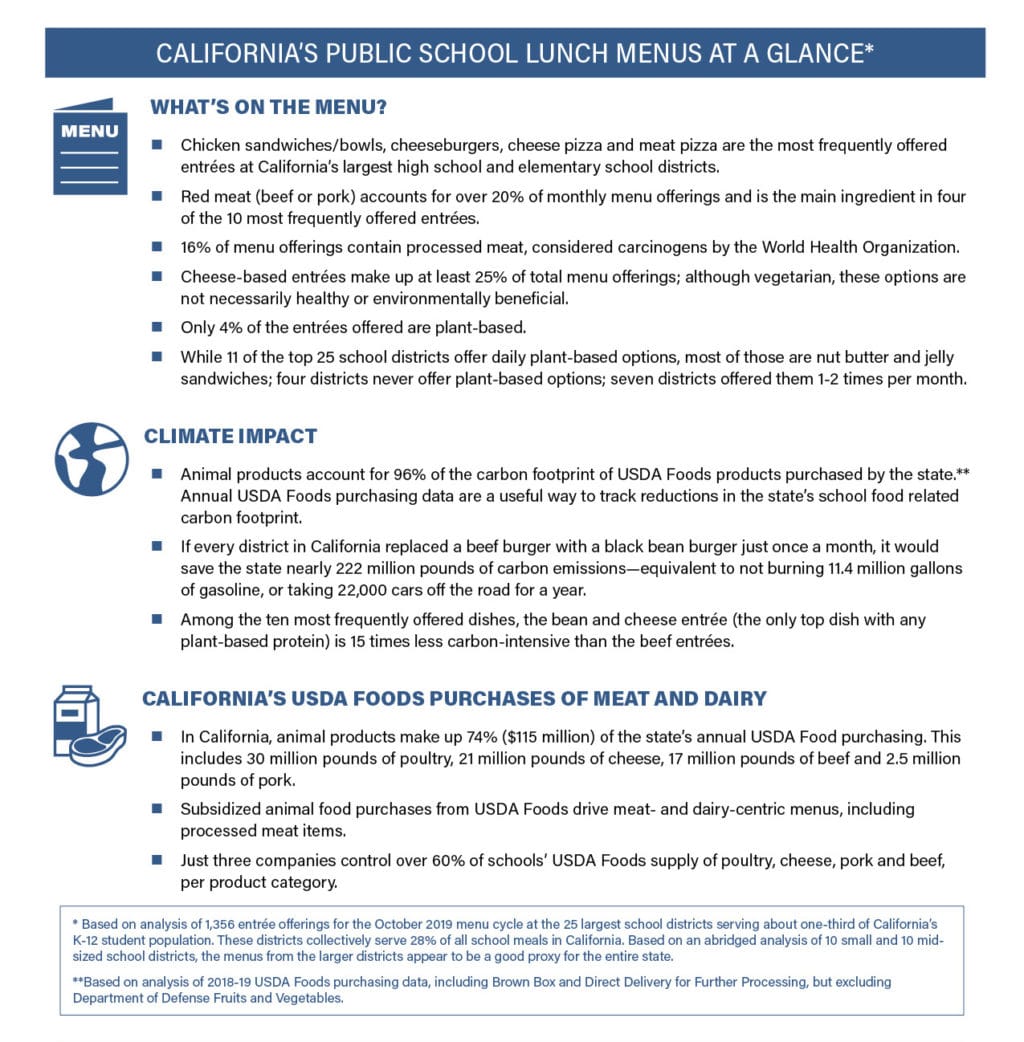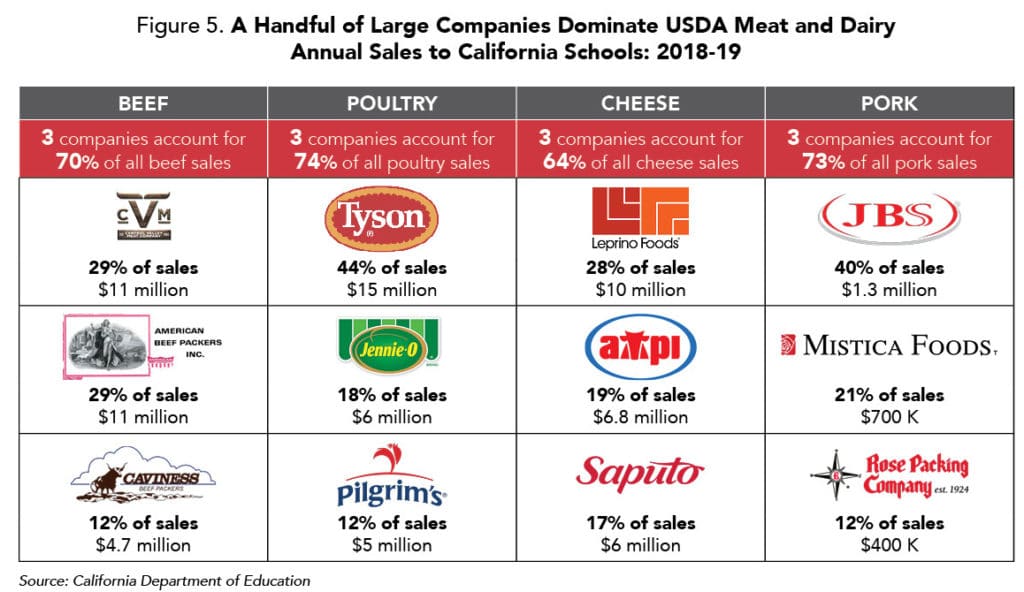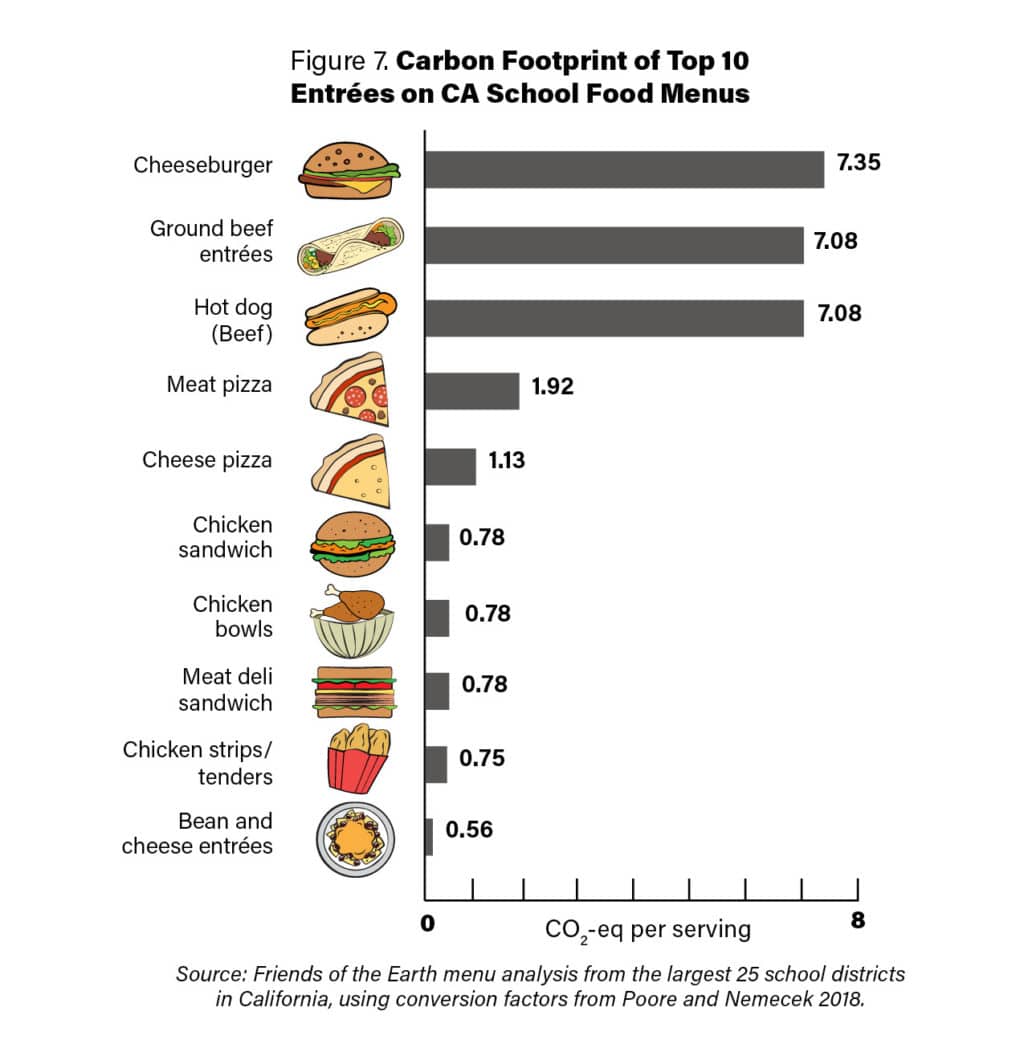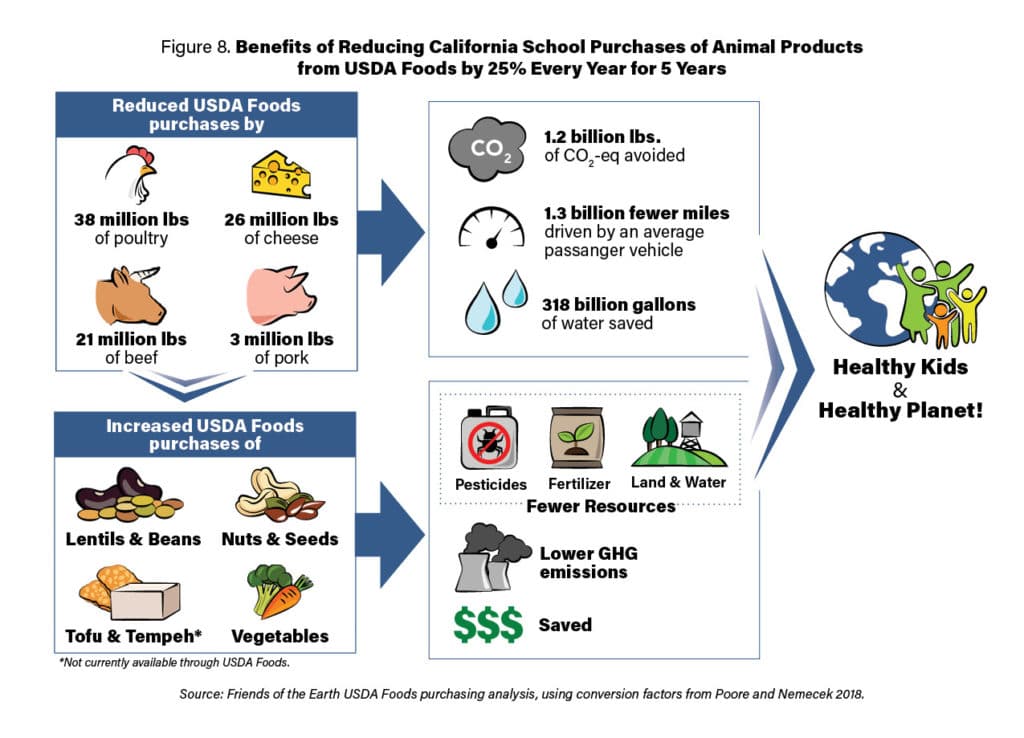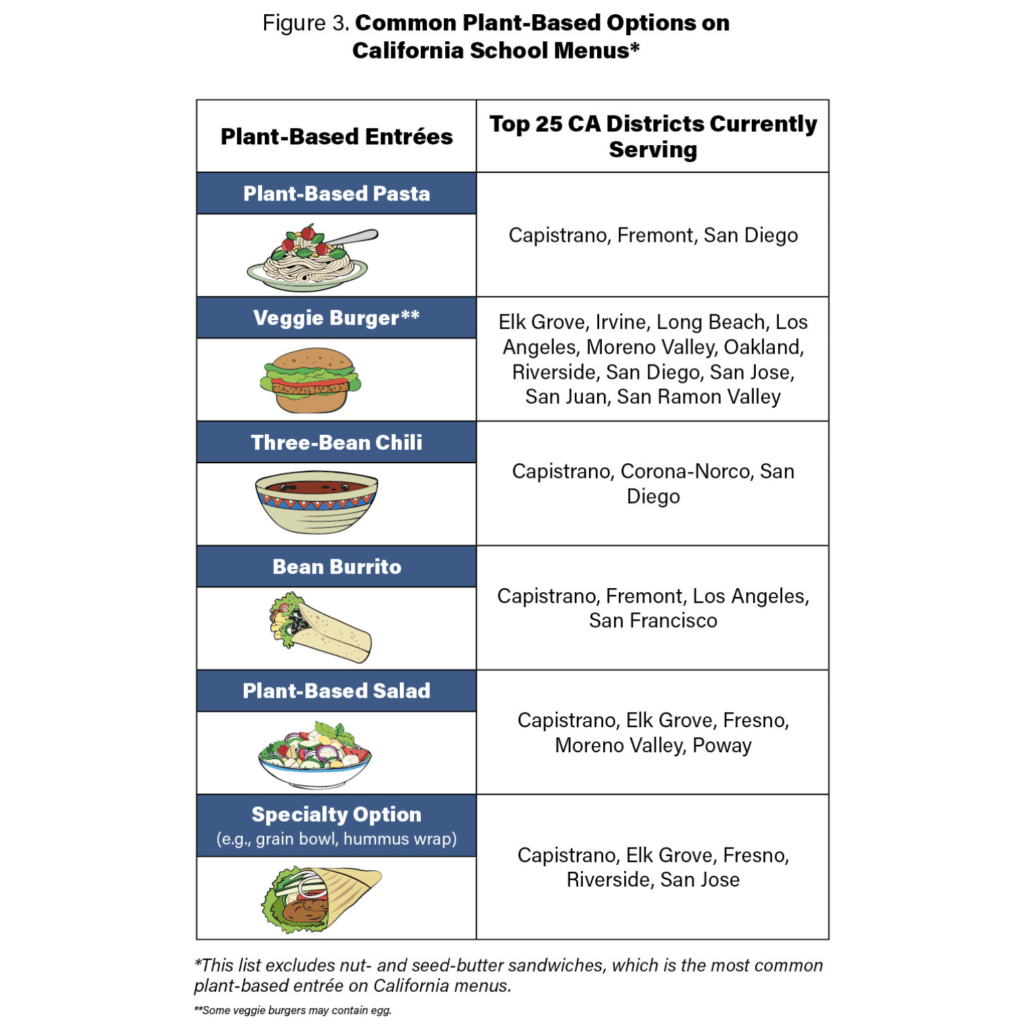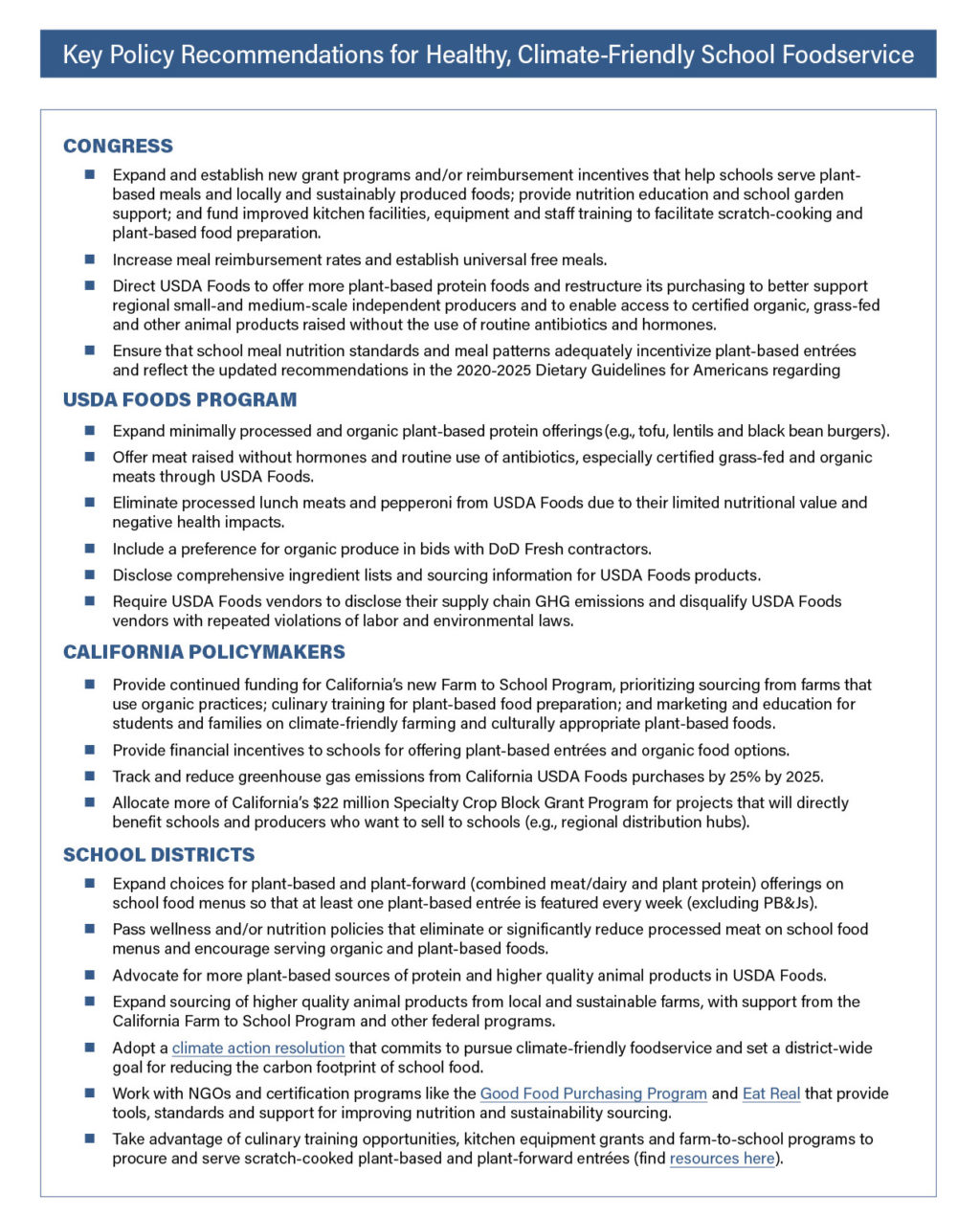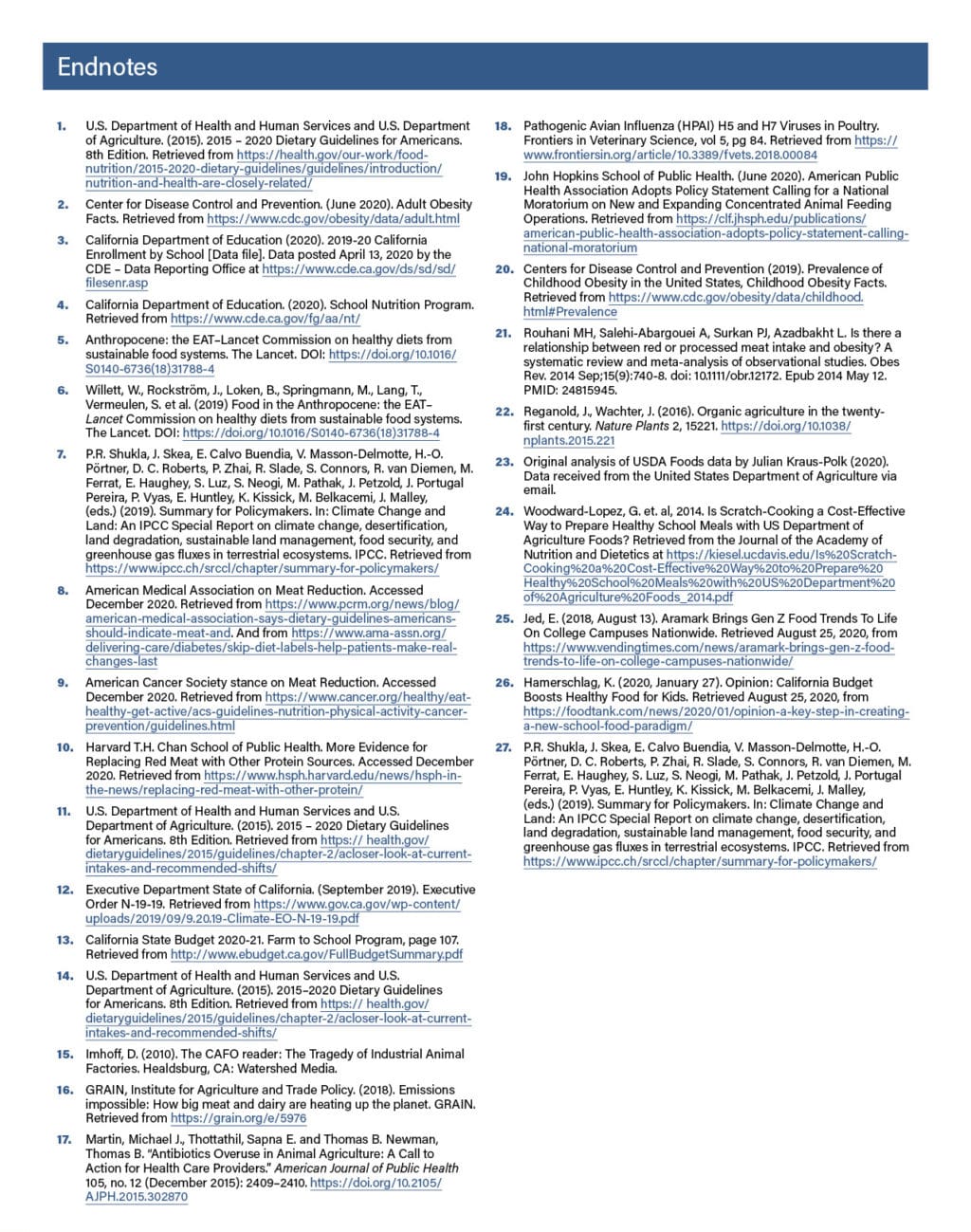- Home
- Food & Agriculture
- Climate-Friendly School Food
- The State of School Lunch in California
The State of School Lunch in California
Download full report HERE
Download executive summary HERE
CalMatters, Transform school meals to nourish kids and create opportunities for farmers
Letter from School Food Directors to USDA asking for more support to serve Organic and Plant Based Foods
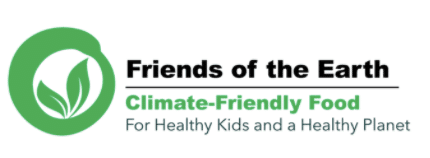
As economic insecurity and our climate crisis intensify, and more than half of Americans suffer from diet-related disease, the need to make school food healthier, climate-friendly and accessible to all families is more urgent than ever. (1,2) In California, school districts spend more than $1.5 billion dollars a year to provide 540 million school lunches to over four million students, most of whom are low-income and students of color. (3,4,5) How these dollars are spent and the quality of meals served have a profound and long-term impact on health and educational outcomes for students, as well as the health of the planet. With low-income students and students of color at a higher risk for diabetes and obesity, school meals are a critical intervention to address racial and socio- economic health disparities among children who lack access to healthy food at home.
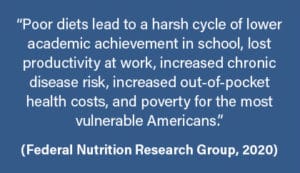
- Analyzed the ten most widely offered items and the relative frequency of meat and dairy-centric vs. plant-based lunch entrées offered on the menu at the 25 largest K-12 public school districts in California; (i)
- Examined California’s bulk food spending through the USDA Foods program, including the companies that benefit most from this taxpayer-funded program; (ii)
- Calculated the carbon footprints of top lunch entrées and estimated GHG emissions associated with California’s USDA Foods bulk food purchasing; and
- Makes policy recommendations to better align menus with public health recommendations and California’s climate and sustainable food procurement goals. (12)
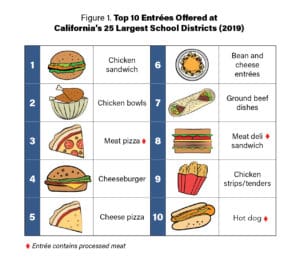
School foodservice programs have the monumental task of satisfying kids, who are often accustomed to junk food, while also meeting nutrition requirements, staying within tight food budgets and maintaining high participation rates.
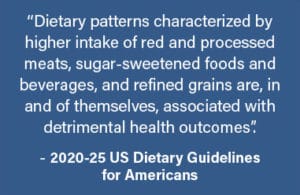
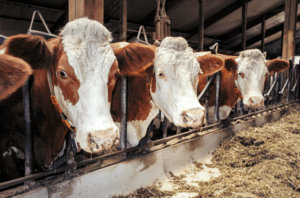
At the same time, childhood obesity rates are soaring, particularly among low-income adolescents and children of color— and overconsumption of meat, especially red and processed meat is linked to obesity. (20,21) Schools’ frequent offerings of cheeseburgers, pizza, chicken fingers and hot dogs does not help our children establish a lifetime of healthy eating; it only worsens our nation’s nutritional divide, putting millions of low-income kids and children of color at a nutritional disadvantage. After accounting for these externalized costs to our health, rural communities and the environment, these “cheap” animal products are not cheap at all.
Meat, dairy and plant-based foods sourced from organic and regenerative farming operations can help restore ecological balance and protect the health of farmworkers, rural communities, the air, water, soil, pollinators and other critical species. (22) Section IV of the report outlines key health equity, climate and cultural considerations for why schools should serve more plant-forward meals and why USDA Foods should purchase fewer industrial animal products and more organic and pasture-based meat and dairy. For more on the health and environmental benefits of organic food, see this Friends of Earth fact sheet: Why Serve Organic School Food.
Our analysis shows that the largest meat and dairy conglomerates have monopolized the USDA Foods market, which supplies the majority of animal products to California schools (see Figure 5). Tyson Foods, the biggest U.S. poultry producer, supplies 44% of all USDA Foods poultry purchased by California schools. Nationally, 15 companies take in nearly 60% of the $1.3 billion annual USDA Foods spending—and 13 of these are meat or dairy companies. (23)
By providing industrially produced meat and dairy at a highly subsidized price, the USDA Foods Program incentivizes school districts to serve products that run counter to student health and environmental sustainability and equity goals. According to one study, 70% of USDA commodity funds nationally were spent on just four foods—raw beef, mozzarella cheese, cheddar cheese and chicken. (24) These foods made up 88% on USDA Foods sent for processing, for entrée items such as hamburgers, pizza and chicken nuggets, foods that appear frequently on California school menus. More sustainable and healthful plant-based sources of protein, such as lentils, tofu and tempeh, cannot compete against these subsidized animal products and are not available through USDA Foods. To create widespread purchasing shifts that enable foodservice directors to prioritize their students’ health and the environment, USDA Foods must be restructured to support more plant-based protein foods as well as organic and regenerative meat from smaller-scale regional, independent producers.
Plant-based entrées are gaining popularity among students, (25) but they still represent a small portion (4%) of all entrées on California school menus. Adding plant-based or plant-forward (combined meat or dairy with plant protein) entrées to the menu can generate significant carbon savings and benefit student health, as well as accommodate the increasing number of students who are vegetarian or vegan for cultural, religious, health or ethical reasons. For a deeper dive into the nutrition and processing considerations associated with plant-based foods, Eat REAL has developed a guidance document for school foodservice professionals.
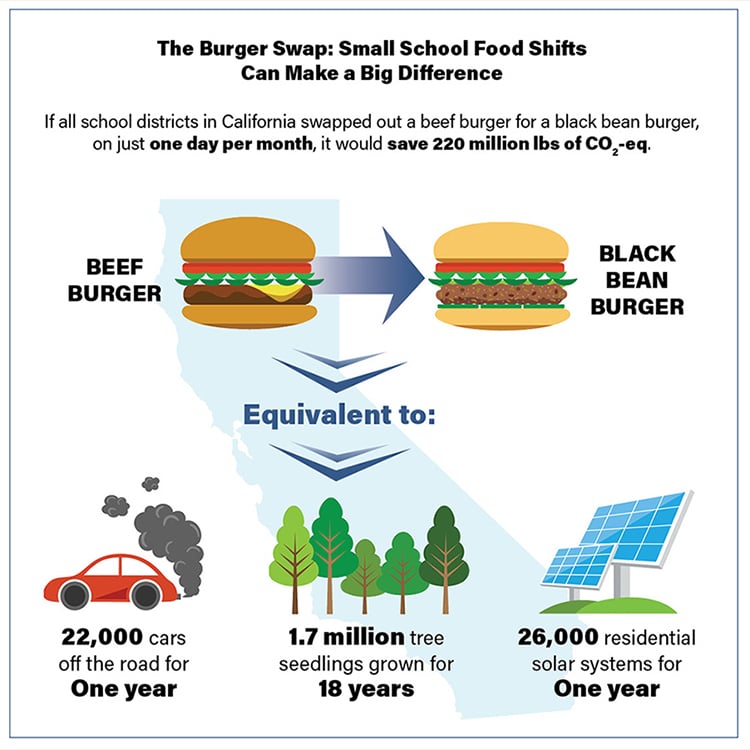
We cannot ignore the enormous opportunity to reduce the climate impacts and improve the health of school meals by rebalancing menus to feature more plant-based proteins and more food from local and organic farms that use climate- friendly practices. Leading experts on the Intergovernmental Panel on Climate Change (IPCC) make this clear: “balanced diets, featuring plant- based foods…and animal-sourced food produced in resilient, sustainable and low-greenhouse gas emission systems, present major opportunities for adaptation and mitigation while generating significant co-benefits in terms of human health.” (27) Making California school lunch more nourishing and balanced will require increased funding and sustained effort—including education, cultural shifts, marketing and policy changes at the district level, in Sacramento, in Congress and at the USDA. Below, we outline key policies that will help foster healthier, climate-friendly school food.
Acknowledgements
This report was written by Julian Kraus-Polk, consultant to Friends of the Earth, and Kari Hamerschlag, Friends of the Earth, with significant support and input from the Climate-Friendly Food Team at Friends of the Earth. It would not have been possible without the menu-level data gathering and analysis from Emma Finn, as well as the general support and guidance from Elizabeth Vaughan. Chloë Waterman, Christopher Cook and Lisa Archer also provided invaluable feedback and edits. Finally, for her creativity and beautiful design work, we thank Keiko Okisada.
For their supportive guidance, helpful reviews and edits, we thank Haven Bourque of Haven B. Media; Kristin Zellhart and Nora LaTorre of Eat REAL; Lena Brook from the Natural Resources Defense Council; Jessi Silverman and Meghan Maroney from the Center for Science in the Public Interest; Leah Carpenter and Jennie L. Hill, PhD of the Gretchen Swanson Center for Nutrition; Lucy A. Hicks, a school nutrition and school finance consultant. We also thank Vince Caguin from Natomas Unified School District and Alex Emmott from San Francisco Unified School District for their helpful contributions.
All the findings, recommendations and any errors in this report are solely the responsibility of Friends of the Earth.

